Latest design has the Ojibway Park wildlife crossing spanning 4 lanes and costing $28M
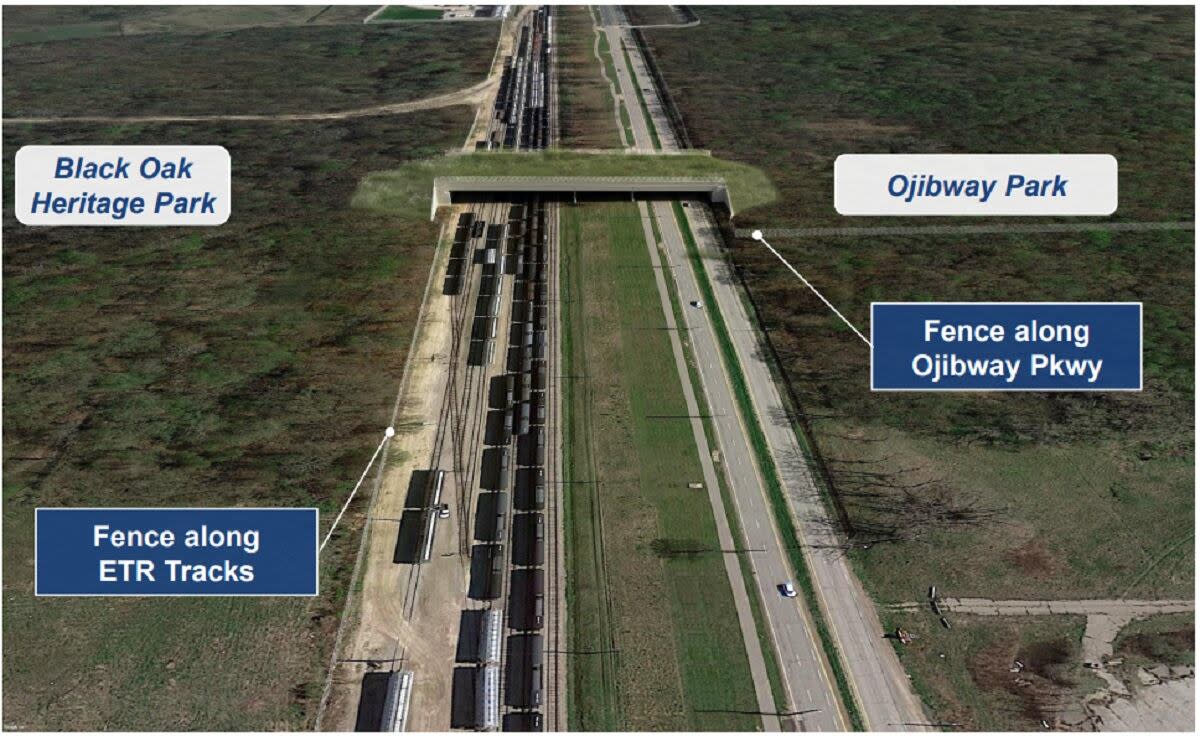
The preferred design for the Ojibway Parkway wildlife crossing spans four lanes of traffic and would cost an estimated $28 million, but the City of Windsor wants to know what you think.
The wildlife crossing project, which would create a vegetation-covered bridge for animals to cross from Ojibway to Black Oak Heritage Park, is in phase three of its environmental assessment. Unlike previous designs, the current concept has the bridge spanning not only the four lanes of automobile traffic on Ojibway Parkway, but also the train tracks of the Essex Terminal Railway.
But that's not carved in stone. The city is planning an open house for Jan. 18, and will take online comments until Jan. 26. It's the third community consultation period on the project study, which began in 2020.
Stacey McGuire, executive director of the City of Windsor's engineering department, says the city takes the comments to heart.
That's "evidenced by the fact that we're coming back now with a different design than before," she said.
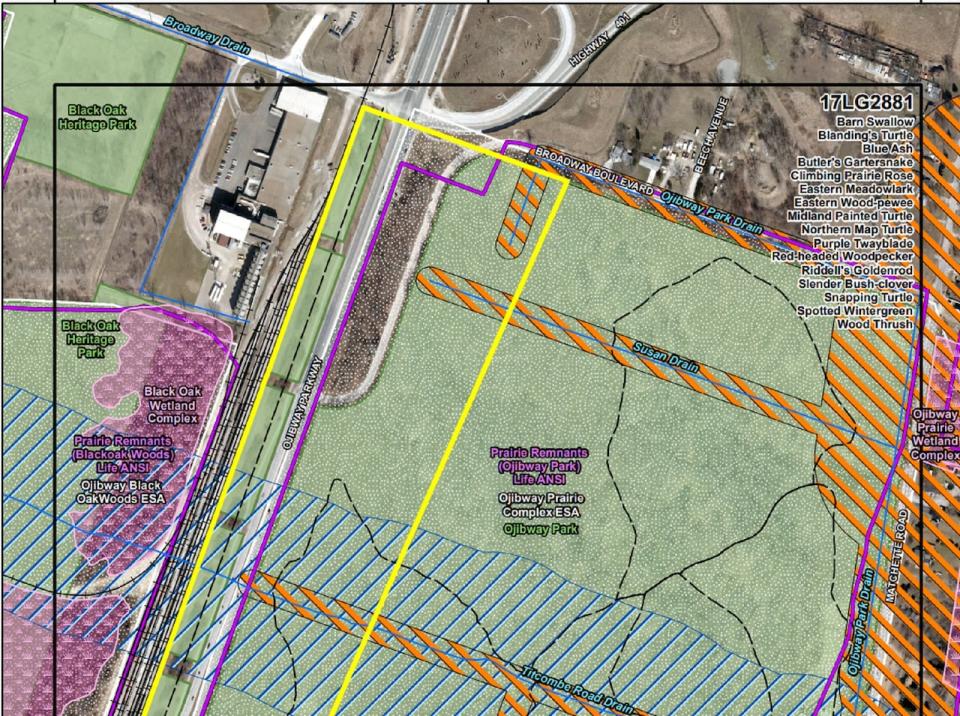
A map showing Black Oak Heritage Park (to the west) and Ojibway Park (to the east) separated by Ojibway Parkway and the Essex Terminal Railway train tracks, south of Broadway Boulevard. (City of Windsor)
"The original (concepts) only considered crossing Ojibway Parkway. We heard a lot during those first two public consultations that there is a real need to have the structure extend all the way across... so that the wildlife don't have to contend with the train tracks as well."
All design options for the project envision a wide, sloping bridge heavily covered with native grasses and plants. It's meant to provide safe passage for local mammals such as deer and coyotes, as well as threatened and endangered reptile species like Blanding's turtles and Butler's gartersnakes.
"We've got about 20,000 vehicles that travel down Ojibway Parkway every day," McGuire said. "We have two very important natural features on either side of that roadway: Ojibway Park to the east, and Black Oak Heritage Park to the west."
Those involved in the project anticipate that the crossing will also help plant pollination.
"When plants release their seeds, they'll populate across this large vegetated area," McGuire says. "It's going to be about 50 metres wide. It's not just a small crossing. It's going to be a significant crossing."
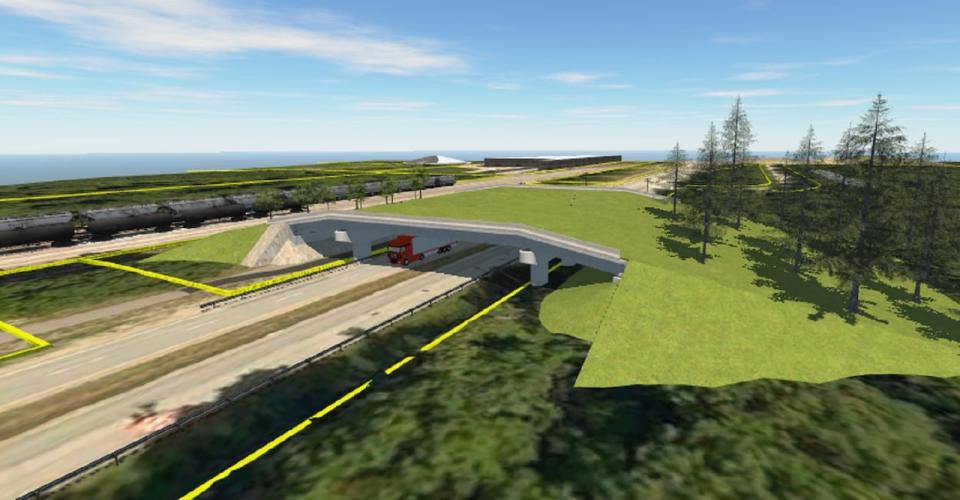
One of the original concept drawings of the Ojibway Parkway Wildlife Crossing project. (City of Windsor)
Instead of retaining walls, the current design has the structure supported by columns. That option has the least impact on driver visibility and allows for future expansion of the roadway.
Fencing would deter wildlife from trying to cross Ojibway Parkway or the ETR train tracks at any other place.
Asked if humans would be able to walk across the bridge, McGuire says that's not a design priority — but it would be possible, provided the walker was willing to make their way through the vegetation.
"It's not like it's going to be a manicured lawn... But some adventurous people, I think, may want to see what's going on."
Design Option 3 carries an estimated construction cost of $28 million — double the construction cost of the previous concept.
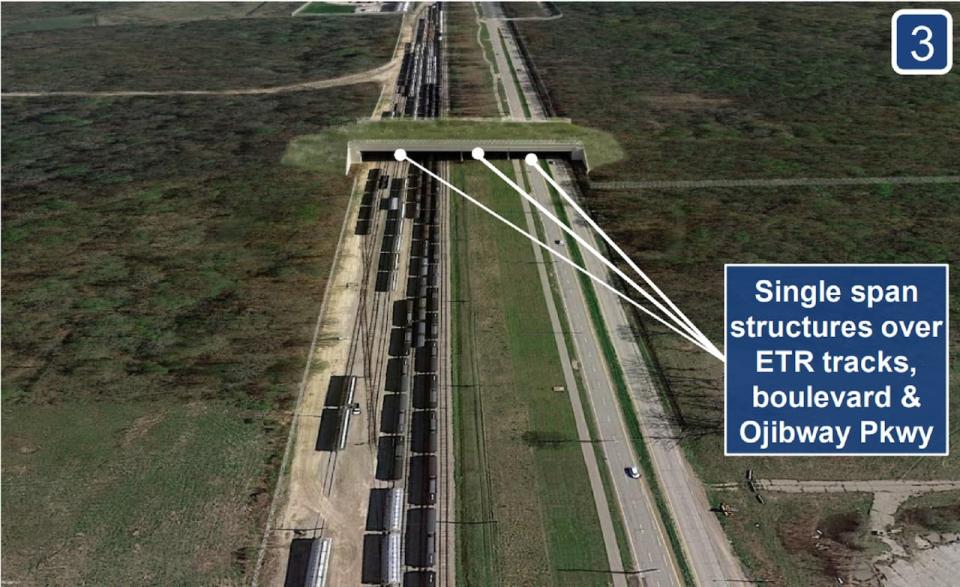
An artist's rendering of Design Option 3 for the Ojibway Parkway Wildlife Crossing project. (City of Windsor)
McGuire says budgeting for that amount has yet to take place. McGuire says the city is looking for sources of money, including grants.
Alexander Campbell, president of the Essex County Field Naturalists' Club, believes that extending the crossing over the tracks is worth the extra cost.
"The Ojibway Complex is home to lots of endangered species, species at risk, and rare species. And, unfortunately, there has been lots of isolation within land," Campbell said.
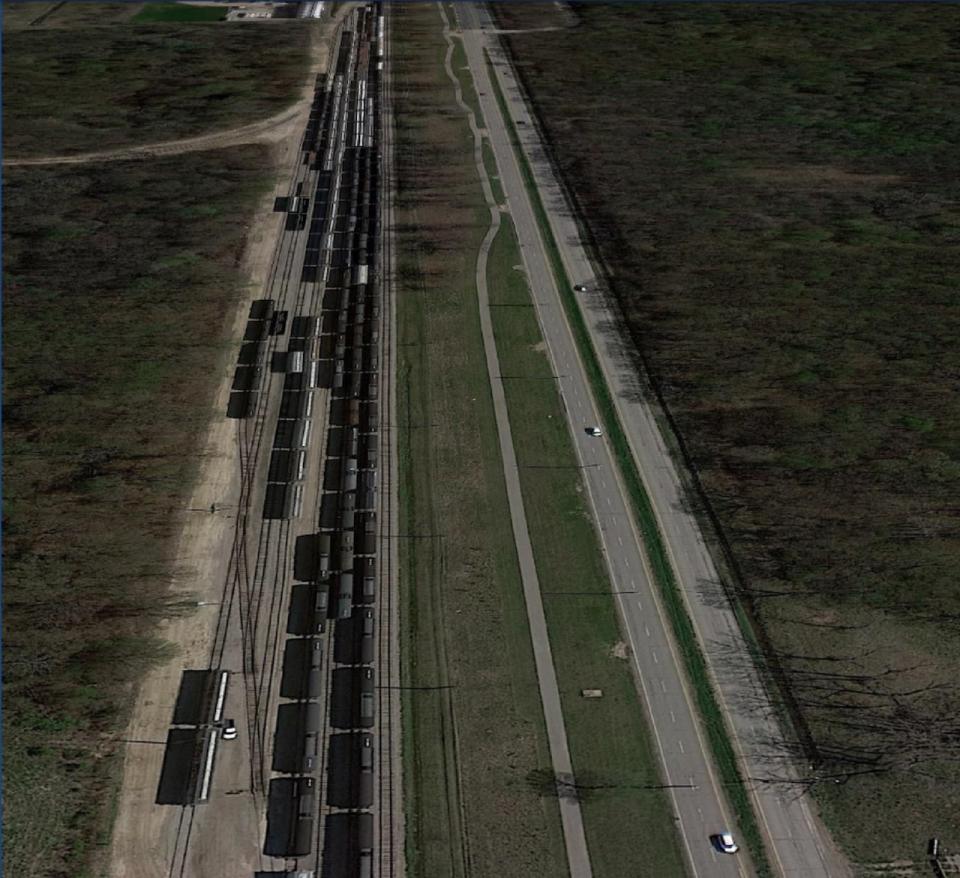
An aerial view of the four lanes of traffic on the Ojibway Parkway and the Essex Terminal Railway train tracks between Ojibway Park on the right and Black Oak Heritage Park on the left. (City of Windsor)
"It's important that (the crossing) extends past the train tracks. A lot of people don't realize that there is quite a bit of mortality from trains. Especially with turtles, for one example. Rail mortality is almost as high as car mortality."
The information session on Jan. 18 takes place at the Ojibway Nature Centre (5200 Matchett Rd.) from 2 to 4 p.m. and from 6 to 8 p.m.
There's also an online comment form under Public Information Centre #3 on the city's website until Jan. 26.
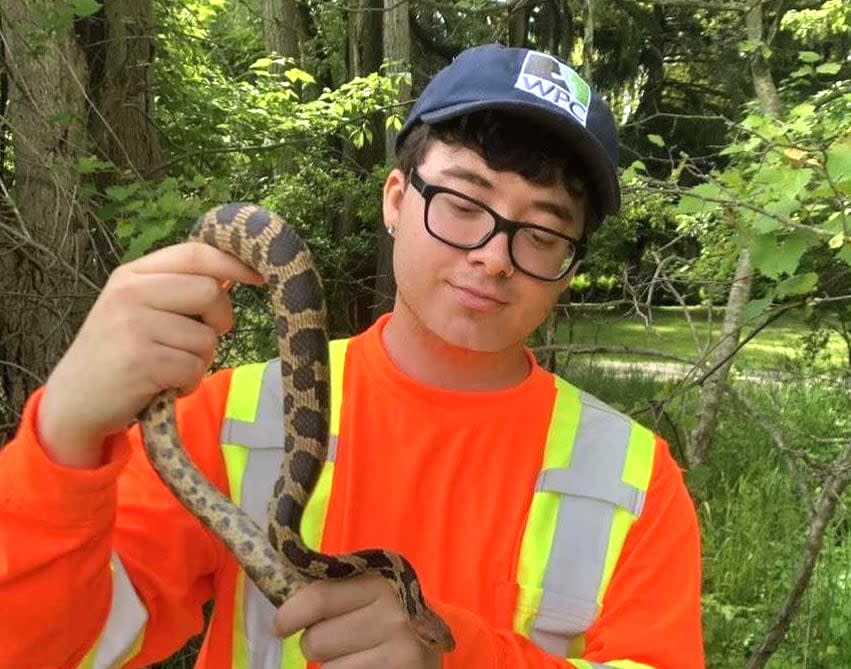
Alexander Campbell, president of the Essex County Field Naturalists' Club. (Alexander Campbell)
After this feedback period, the project's study team will finalize the design and update its report.
The report will be reviewed by necessary agencies and First Nations representatives, then be presented to city council for approval, ideally in May 2024.
The team hopes the study is completed by July 2024, so that the project can embark on Phase 5 — the detailed design.
A date for possible construction has not been discussed. It's estimated that the work would affect traffic for about 18 months.
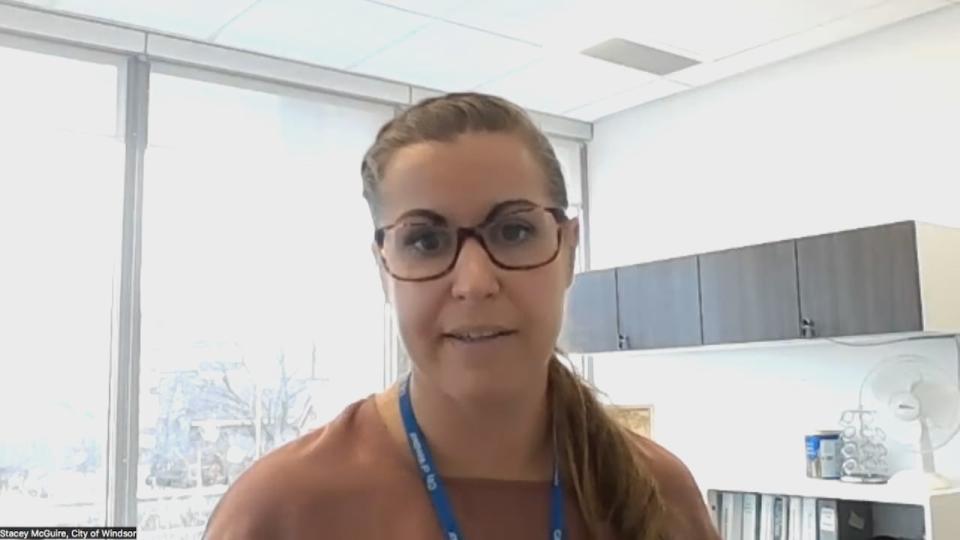
Stacey McGuire, executive director of the City of Windsor's engineering department. (City of Windsor)

 Yahoo News
Yahoo News 
